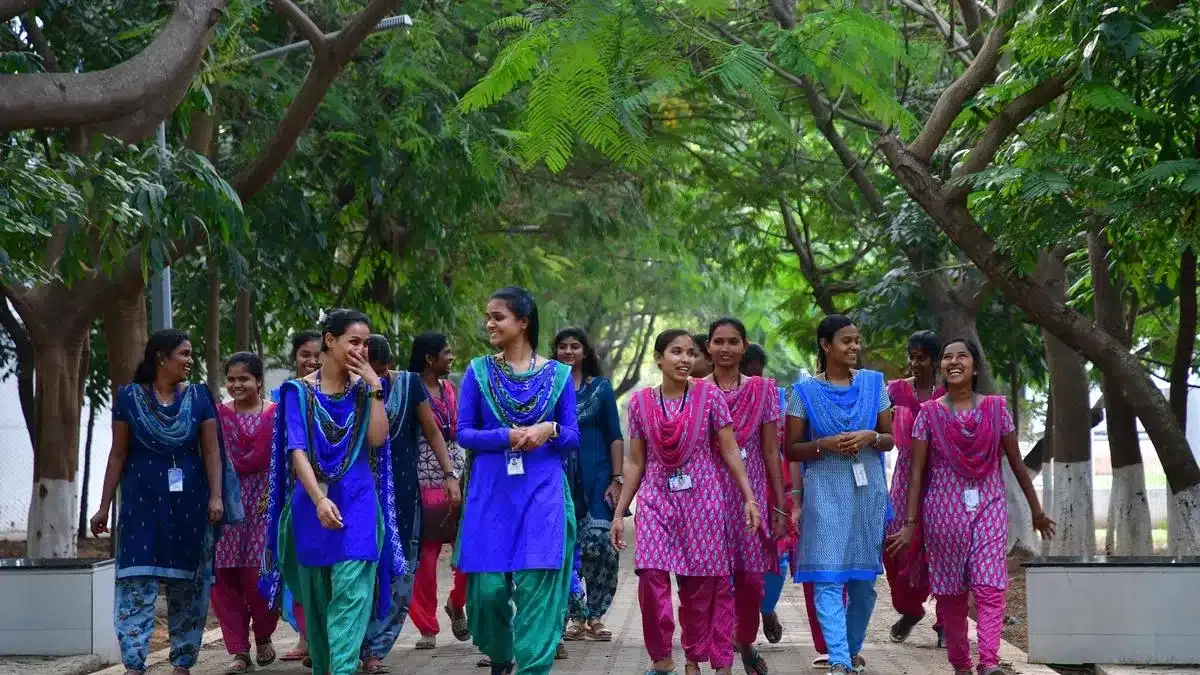What’s in today’s article?
- Why in News?
- What is a Care Economy?
- Key Issues Related to the Care Economy in India
- Key Features of the National Policy to Increase Female Workforce Participation
- Key Barriers to Women’s Workforce Inclusion, Government Initiatives and Way Ahead
- Conclusion
Why in News?
- The Indian government is set to unveil a comprehensive national policy aimed at increasing female labour force participation, focusing on creating an enabling environment through a robust care economy framework.
- Key ministries are collaborating to address the challenges women face in balancing caregiving responsibilities with employment.
What is a Care Economy?
- It refers to the sector of economic activity that encompasses the provision of care and support services, particularly those related to health, education, childcare, eldercare, etc.
- It encompasses paid and unpaid care work crucial for human survival, welfare, and labor force participation.
- It helps to address material, emotional, and developmental requirements but is sometimes unrecognised or undervalued, resulting in a “hidden care economy“.
- This dilemma prompted the Beijing Platform for Action in 1995, which pushed for identifying and appreciating women’s contributions in caregiving, domestic work, and volunteerism.
Key Issues Related to the Care Economy in India:

- High percentage outside workforce: Over half of India’s women (53%) remain outside the labour force, largely due to unpaid caregiving duties, in stark contrast to only 1.1% of men.
- Unpaid domestic and household work: According to India’s Periodic Labour Force Survey (PLFS) for 2023-24, around 36.7% of females and 19.4% of the workforce are involved in unpaid household work.
- Gender disparities in domestic work: The National Statistical Office (NSO) Time Use Survey 2019 shows that 81% of Indian females aged 6 and above spend over five hours daily on unpaid domestic activities.
- Caregiving time differences: Among those 6 years and older, 26.2% of females spend over two hours daily on caregiving versus 12.4% of males, indicating the disproportionate share borne by women.
Key Features of the National Policy to Increase Female Workforce Participation:

- Focus on the care economy:
- The proposed policy emphasises the development of a care economy.
- A care economy includes:
- Direct care: Activities such as feeding children and caregiving.
- Indirect care: Tasks like cooking, cleaning, and other domestic services.
- Broader services: Healthcare, education, and personal assistance.
- Caregiving infrastructure: Developing support structures to reduce the caregiving burden on women and encourage labour market participation.
- Core skilling package: A specialised training program for caregivers, particularly for childcare, is under consideration.
- Childcare for informal sector workers: Childcare facilities, especially for workers under the Mahatma Gandhi National Rural Employment Guarantee Scheme (MGNREGS), will be a critical component.
Key Barriers to Women’s Workforce Inclusion, Government Initiatives and Way Ahead:
- Barriers:
- According to a ILO report, low educational attainment, limited job opportunities, and inadequate infrastructure are critical factors keeping women out of the workforce.
- Cultural norms around caregiving heavily restrict women’s labour market access, especially in rural areas, reinforcing existing gender inequalities.
- Existing initiatives – Palna scheme:
- The Ministry of Women and Child Development operates the ‘Palna’ scheme, which provides Anganwadi-cum-crèche facilities for children aged 6 months to 6 years.
- Key highlights of the scheme include:
- Services offered: Nutritional support, health monitoring, immunisation, cognitive development, and education.
- Current status: As of now, 1,000 Anganwadi creches are operational.
- Way ahead:
- To address the high percentage of women outside India’s workforce due to care responsibilities, substantial investments in the care economy – especially in early childhood care and education (ECCE) – are essential.
- Such initiatives cannot only foster gender equality but also unlock economic potential by enabling more women to enter and thrive in the workforce.
- Nations like Belarus, Bulgaria, and Sweden maintain lower proportions of women outside the workforce (less than 10%) by investing in ECCE, roughly 1% of their GDP.
Conclusion: The national policy document intends to close the gender gap in the workforce by tackling systemic impediments and improving support mechanisms, thereby empowering women and increasing their economic participation.
Q.1. How is Mahatma Gandhi National Rural Employment Guarantee Scheme (MGNREGS) increasing female labour force participation in India?
MGNREGS is a gender-neutral Scheme which promotes participation of women by providing wage parity with men, provision of a separate schedule of rates of wages for women, facilities for crèche, work-side sheds for children, and child care services.
Q.2. What was the Beijing Platform for Action in 1995?
The Beijing Declaration was a resolution adopted by the UN at the end of the Fourth World Conference on Women on 15 September 1995. The resolution adopted to promulgate a set of principles concerning the equality of men and women.
News: Centre working on national policy paper on female labour force participation
Last updated on June, 2025
→ UPSC Notification 2025 was released on 22nd January 2025.
→ UPSC Prelims Result 2025 is out now for the CSE held on 25 May 2025.
→ UPSC Prelims Question Paper 2025 and Unofficial Prelims Answer Key 2025 are available now.
→ UPSC Calendar 2026 is released on 15th May, 2025.
→ The UPSC Vacancy 2025 were released 1129, out of which 979 were for UPSC CSE and remaining 150 are for UPSC IFoS.
→ UPSC Mains 2025 will be conducted on 22nd August 2025.
→ UPSC Prelims 2026 will be conducted on 24th May, 2026 & UPSC Mains 2026 will be conducted on 21st August 2026.
→ The UPSC Selection Process is of 3 stages-Prelims, Mains and Interview.
→ UPSC Result 2024 is released with latest UPSC Marksheet 2024. Check Now!
→ UPSC Toppers List 2024 is released now. Shakti Dubey is UPSC AIR 1 2024 Topper.
→ Also check Best IAS Coaching in Delhi
























